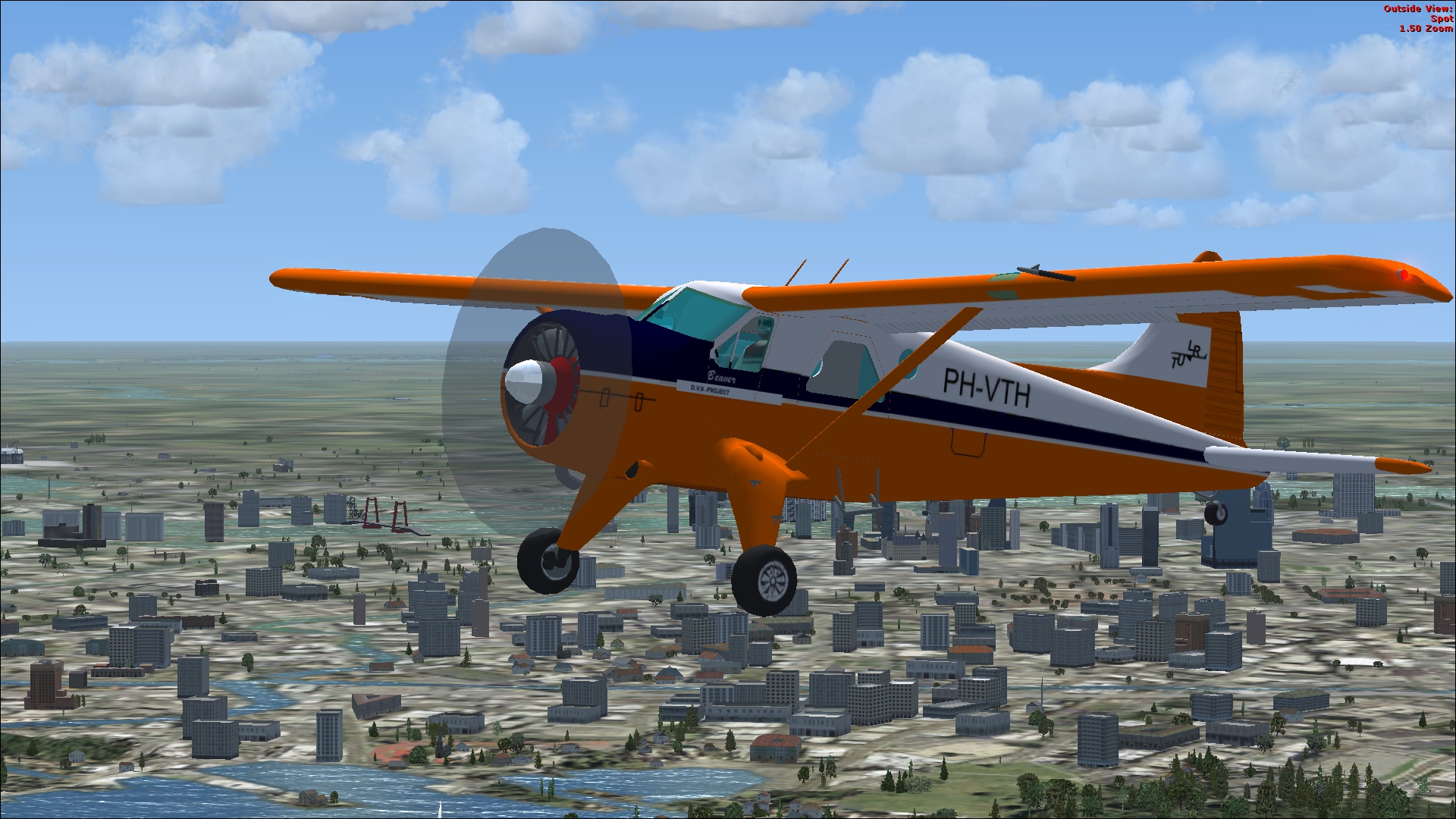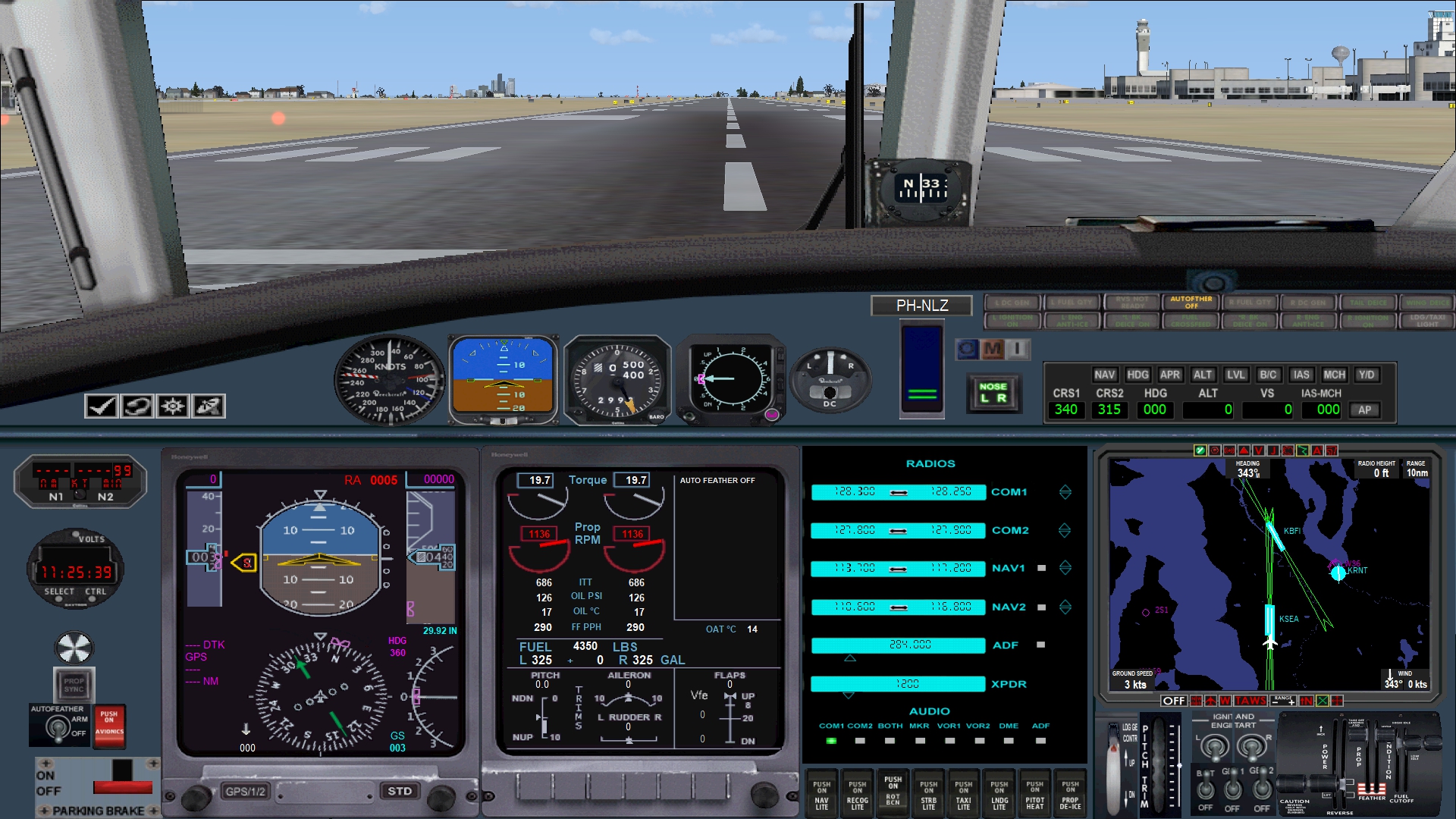Type: Cessna Citation 550 Citation II
Program: FS2004 and FSX
Model: Dee Waldron AI model
Operator: NLR en TU Delft
Download: Complete aircraft
This Cessna Citation II is used by NLR since December 1993 and since 2014 by TU Delft as well. The aircraft is jointly owned and is named after Prof H.J. van der Maas, emiritus professor at the TU Delft. On one side it carries the livery of NLR and the other side of TU Delft.
Type: Fairchild Swearingen Metro 23
Program: FS2004 and FSX
Model: Mike Stone
Operator: NLR
Download: Complete aircraft
On Saturday, April 5, 1919, the Dutch National Study Service for Aviation (RSL) started in Amsterdam. The service started with technical-scientific research which could not be done by the aircraft manufacturers or users because they did not have the right equipment, specialized knowledge and experience to do so. A windtunnel was built which was in use until 1940. The RLS also became responsible for issuing airworthiness certificates.
After the Second World War, the Government decided to support the reconstruction of the Dutch aircraft industry and the RLS was transformed into the Netherlands Institute for Aircraft Development (NIV). They focused on fundamental research and support in the development of new aircraft from Fokker in particular. The NIV played an eminent role in the development of the Fokker F.27 Friendship, F.28 Fellowship and the Fokker 50, 100 and 70. Nowadays, NLR (National Aerospace Laboratory) is an independent knowledge and research centre with a broad spectrum of customer groups: Space travel, industry and operators, defense and civil aviation. Both nationally and internationally. It cooperate with the industry, universities, and other knowledge institutions. The laboratory has always had laboratory aircraft. The Fairchild Swearingen Metro 23 was used from 1979 till 1993.
Type: De Havilland DHC-2 Beaver
Program: FS2004 and FSX
Model: Steven Grant
Operator: TU Delft
Download: Complete aircraft
The Aerospace Engineering faculty at Delft University of Technology is the Dutch knowledge and education institute of Aerospace technology. A third of the approximately 2500 students come from abroad. At the beginning of 2014, ten chairs were grouped under four umbrella departments: Aerodynamics, wind energy, flight propulsion technology - Aerodynamics, Wind Energy,
Flight Performance and Propulsion (AWEP), Control and Operations (C&O), Aerospace Structures and Materials - Aerospace Structures and Materials (ASM).The TU Delft has subsonic, supersonic and hypersonic wind tunnels and a flight simulator. There is close cooperation with the National Aerospace Laboratory, the Dutch Institute for Aircraft Development and Space Travel (NIVR) and the Dutch Organization for Applied Scientific Research. In its history, TU Delft has always had laboratory aircraft, such as the Fokker S-12 and the De Havilland DH-2 Beaver. The Beaver was used from 1958 to December 1993 for projects such as the Experimental Digital Autopilot.










